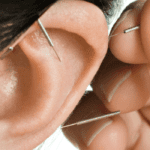Chiropractic care is a type of alternative medicine that involves hands-on adjustments from chiropractors to help the body heal. These adjustments realign joints, relieve musculoskeletal pain, and address other body issues.
Seventy million American adults experience some form of chronic pain. Many turn to chiropractic treatments in their search for alternative ways to achieve pain relief.
If you’re still unsure if you need to go to a chiropractor, here are some signs you might need to visit the chiropractor, the benefits of chiropractic care, and what you should expect from your visit.
When should you go for a chiropractic visit?
When to see a chiropractor? Your body will let you know if an issue needs attention. Here are some signs you need to visit a chiropractor soon:
You have muscle or joint pain.
Reaching for pain medication may seem like the quickest solution to a painful joint or muscle. However, this approach only masks the symptoms and not their root cause. If the pain persists or worsens, it could indicate alignment issues in your spine.
You have frequent headaches.
You may need to visit a chiropractor if you have migraines or headaches that leave you drained and don’t go away with prescription or over-the-counter drugs. Headaches can happen due to dehydration and malnutrition, but they can also occur when you have a spinal misalignment.
You have chronic back pain.
Chronic back pain is another indicator that you need to visit a chiropractor. Sitting or standing for extended periods and poor posture are common causes of chronic back pain.
Your soles wear out differently.
Soles that wear out differently may indicate a misalignment in your musculoskeletal system, causing an uneven pressure distribution. This may mean that some of your bones may be partially out of their joints.
You were recently in an accident.
An accident such as a fall or collision can result in alignment issues, including whiplash. These can disrupt your daily routine and cause mobility issues.
You live an active lifestyle.
An active lifestyle has numerous benefits for your overall health. But with time, repetitive motions from exercising or sports can strain your body and put pressure on it, leading to issues like pinched nerves, spinal misalignment, and slipped discs.
Benefits of Chiropractic Care
Here are some of the advantages chiropractic offers:
1. Relieves Neck Pain
Chiropractic treatments realign your spine and ease tense neck muscles, which can relieve neck pain caused by poor posture, long hours of sitting, and phone use.
2. Reduces Dependence on Opioid Pain Relievers
Many patients with pain often rely on opioids to manage their pain; however, depending on them too much reduces their effectiveness and causes unpleasant side effects.
Chiropractic treatments are an excellent alternative to opioids. They relieve pain, address the cause of the pain, and reduce reliance on opioid pain relievers.
3. Relieves Back Pain
Aside from medications, surgery and injections are common acute or chronic back pain. But they often come with side effects and can sometimes be more expensive.
The American College of Physicians recommends doctors encourage their patients to seek non-medical treatments for their chronic back pain before taking medications like exercise, yoga, acupuncture, and chiropractic therapy. They are also more cost-effective than conventional treatments.
4. Reduces Osteoarthritis Symptoms
The bones of your joints don’t rub together because cartilage protects their ends. But when you have osteoarthritis, the cartilage deteriorates, causing you pain.
Fortunately, chiropractic adjustments can help align joints and reduce the progression of arthritis.
5. Relieves Headaches
Headaches happen due to many causes, but more often than not, they’re due to tense neck muscles. Chiropractic care effectively treats tension headaches and neck-related headaches.
6. Improves Scoliosis Symptoms
Scoliosis is a condition that affects the spine’s curvature. It currently doesn’t have any treatment aside from surgery. However, chiropractic treatments can help improve a scoliosis patient’s Cobb angle, a measurement of the spine’s side-to-side deformity.
7. Improves Posture
Poor posture can cause a lot of back problems if not addressed. Chiropractic care helps correct this, especially if your poor posture is due to extended periods of sitting down.
What should you expect from your chiropractic visit?
Knowing what to expect from your first chiropractic treatment can help relieve some of your worries or concerns.
Before the Adjustment
Before performing any chiropractic procedures, you will provide your medical history, including information about any existing medical conditions, injuries, and treatments. Your chiropractor may also inquire about your discomfort, when it began, how severe it is, and what you were doing when it started. Your chiropractor will discuss your goals and create a personalized treatment plan if you come for preventive or general care.
A physical examination will follow, including assessments of your posture, joint movement, gait, and spine. This will help your chiropractor evaluate your range of motion, muscle strength, neurological function, and reflexes. They will also check your blood pressure.
Sometimes, chiropractors may require further testing, such as MRIs and X-rays.
During the Adjustment
Your chiropractor may ask you to lie on the chiropractic table during the adjustment. Then, they’ll perform the necessary treatments, depending on your condition. Don’t worry; you won’t feel any pain when they do this.
Chiropractors may also use tools to enhance their adjustments.
The results of adjustments may vary. Some experience immediate relief; others need more treatments, such as ice, heat, and massage therapy.
After the Adjustment
After the adjustments, your chiropractor may recommend specific exercises or diet and lifestyle changes. Depending on your condition, your chiropractor may schedule you for follow-up visits. Your condition will also determine the length of your treatment.
While you may experience some mild discomfort or soreness post-session, chiropractic treatments are usually pain-free. However, you should consult with your chiropractor if the pain persists.
How often should you go for a chiropractic visit?
How often you visit a chiropractor will vary depending on the chiropractor’s assessment of your condition. Expect to see your chiropractor once or twice a week for the first two weeks for minor pain. These visits will gradually decrease as your condition improves. You may need two or more visits a week for intense chronic pain. On the other hand, you only need to visit your chiropractor once a month for maintenance or preventive treatments.
Key Takeaway
Chiropractic care is an excellent alternative treatment that many seek for pain relief. It has many benefits, like reduced reliance on pain medications, improved posture, and relief from headaches, neck pain, back pain, and osteoarthritis symptoms.
Chiropractors will ask about your medical history, pain symptoms, and goals before a physical exam and performing adjustments. Expect little to no pain afterward; however, seek help from your chiropractor if the pain persists.
Take the first step to wellness.
If you are still looking for a chiropractor that suits your needs, call Advanced Chiropractors Group. Our affiliate chiropractors in Largo, FL, are the best in their area. Aside from chiropractic, they are also well-versed in other alternative pain relief options, such as acupuncture.
Contact us today, and we’ll connect them to you right away.











